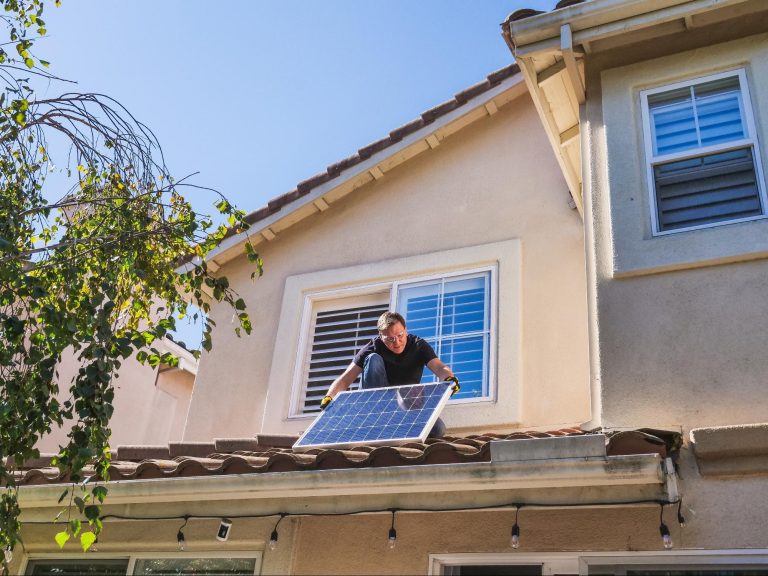As we become more aware of the impact our daily activities have on the environment, homeowners and builders alike are seeking out greener, more sustainable solutions for the places we call home. This has spurred a wave of innovative technology that’s revolutionizing the way we live. In this article, we’ll explore some of the most exciting advancements in green technology for our living spaces.
Energy Generation and Storage
One of the most popular renewable energy sources, solar panels, has become commonplace in many households. Solar roof shingles take the concept a step further, integrating thin photovoltaic cells into the roof tiles themselves. This provides a seamless look with the added benefit of generating clean, renewable energy.
Energy storage systems, such as those using lithium-ion batteries, store renewable energy gathered by solar panels. This not only allows homeowners to become more self-sufficient by using stored power during power outages or peak times when electricity costs are high but also helps to reduce demand on the grid.
In Texas, the growing popularity of green technologies has given residents the power to choose Texas electricity providers that offer renewable energy and energy-efficient plans. This not only benefits homeowners and the environment but also encourages energy providers to adopt greener technologies and contribute to a sustainable future.
Water Efficiency Solutions
- Low-flow fixtures: Devices such as faucets, showerheads, and toilets that reduce the amount of water used can make a significant impact on water conservation.
- Greywater recycling: Greywater, which is wastewater from sources like sinks and showers, can be collected, treated, and reused for irrigation and other non-potable uses, reducing demands on freshwater sources.
- Rainwater collection: Harvesting rainwater in barrels or specially-designed tanks can provide a sustainable water source, cutting down on the need for municipal water supplies.
Energy Efficiency
In addition to boosting energy efficiency, smart lighting systems can significantly enhance the comfort and usability of our living spaces. These systems allow for the customization of lighting schemes, remote control through apps, and even learning algorithms that adapt to occupants’ routines and preferences. By adjusting the brightness and color temperature throughout the day, homeowners can create more natural and pleasant environments while reducing energy consumption.
As technology advances, home appliances are becoming more energy-efficient than ever before. This includes kitchen appliances, laundry machines, and even HVAC systems that use less energy while achieving better performance. By opting for appliances with the ENERGY STAR label, homeowners can save on utility bills and minimize their environmental footprint.
Heating and Cooling
Another innovative green technology to consider is geothermal heat pumps for heating and cooling our homes. These systems leverage the stable temperature of the earth’s surface to provide efficient and reliable temperature control. While installation costs can be higher than traditional HVAC systems, the long-term energy savings and reduced environmental impact make them a smart investment for eco-conscious homeowners.
Programmable thermostats are not a new concept, but smart thermostats have taken energy management to the next level. These devices learn your schedule and preferences, adjusting the temperature in your home accordingly, often with mobile app control. The result is increased comfort and more efficient energy use overall.
Improving the general indoor air quality is essential for overall well-being. Eco-friendly methods of doing this include using natural ventilation, low-emitting materials, and smart air purification systems that remove allergens, pollutants, and harmful substances from the air.
Green Building and Gardening
Synthetic materials don’t always have the best impact on the environment, which is why many are turning to more sustainable options for building materials. Some examples include using reclaimed or recycled materials, bamboo flooring, and even straw bale insulation. By making more environmentally-conscious choices, we can reduce the carbon footprint associated with manufacturing and transportation.
Homeowners are increasingly opting for green technology solutions to grow their own food in urban environments. Vertical gardens, hydroponic systems, and smart home gardening solutions provide a bevy of options for home-based horticulturists, requiring less space and water than traditional soil-based gardening.
Whether it’s harnessing the power of the sun or adopting more eco-friendly building materials, these innovative green technologies are making a significant impact on the ways we live and interact with our homes. As technology continues to advance, we can look forward to even more exciting breakthroughs in creating sustainable, energy-efficient living spaces.

